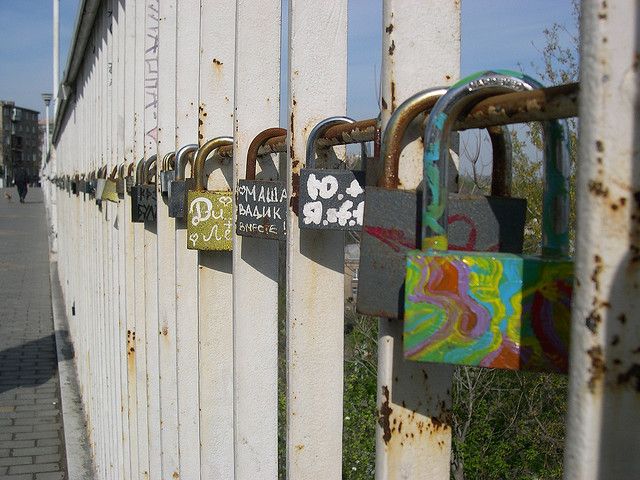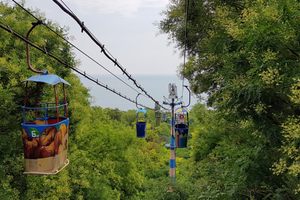About
The shaky Mother-In-Law Bridge (also known as Tioschin Bridge) is continually covered in padlocks placed by couples in love, but not to appease their in-laws as the name might suggest.
The narrow Ukraine pedestrian bridge is built over a gully to connect two roads in the town of Odessa. The origin of the bridge's name is up for debate but there are two prevailing theories. Built in 1969 the metal and brick expanse is not the most secure piece of civil architecture and when several people jump on the bridge together, or strong winds strike the structure, it is known to shake violently. The first theory holds that this swaying (or wagging) was akin to that of a mother-in-law's tongue, hence the descriptive name. The second, more accepted but no less colorful, story is that the local chairman who commissioned the bridge did so because he loved his mother-in-law's pancakes, but she lived on the other side of the ravine, thus the bridge was built to facilitate the indulging of this appetite.
The tradition of hanging padlocks on bridges and fences is a known European tradition and given the marital connections of the name, no matter which origin you believe, it is no surprise that it spread to the Mother-In-Law bridge. Due to the weight of all the locks and the weak construction of the bridge, the city continually removes the locks from the bridge and even built a large, metal heart on the Western end specifically to hang locks from. Despite this installation many young lovers still hang their locks directly on the bridge.
Related Tags
Know Before You Go
Heading from Primorska street, go to Vorontsov palace, and take a left. This will take you across the bridge and into old Odessa.
Community Contributors
Added By
Published
October 16, 2013

























